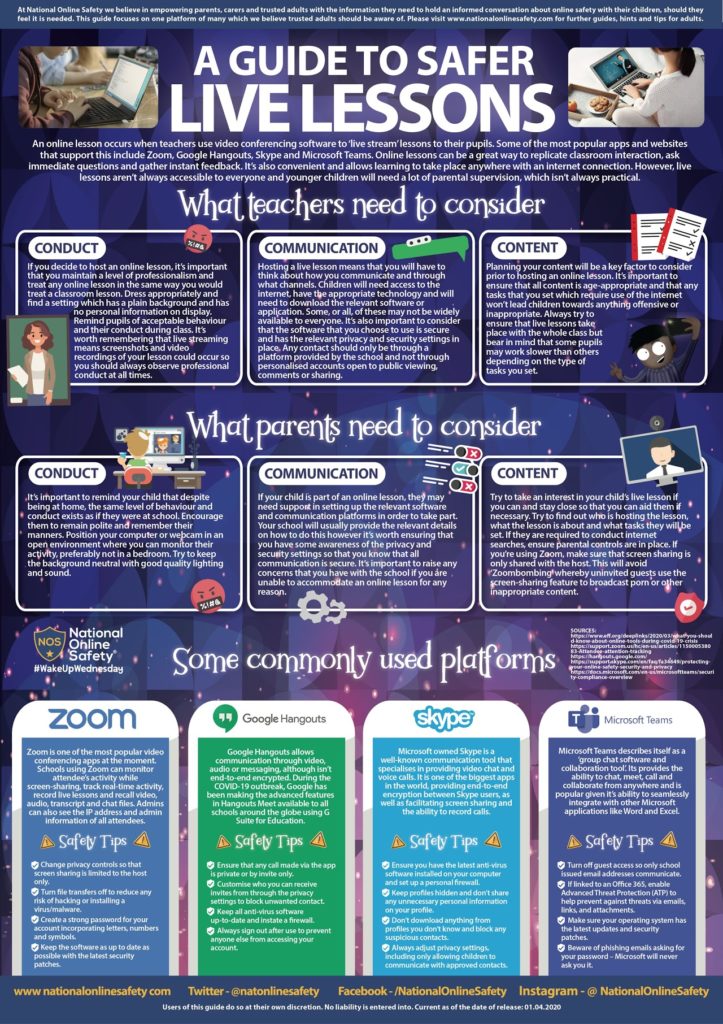Quick Tips
- Be flexible. Be empathetic. Start synchronous meetings checking in with students to see how things are going.
- Consider meeting in smaller groups rather than whole class, even scheduling one-on-one meetings.
- If your videoconferencing system allows for breakout rooms, create activities that allow for students to get in smaller groups for periods of time.
- Create a list of norms about interacting synchronously.
- If your videoconference tool does not have a system for raising hands, create systems for participating in turn. Examples include using a symbol in the chat bar, toggling video on/off, or have students hold up a brightly colored object to alert the teacher.
- Provide tutorials and practice sessions as well as a parent help guide.
- Create activities that are short but allow for all students that are in attendance to participate.
- Follow up with students who were unable to attend with alternate activities. In additional, follow up with everyone recapping the learning.
Be Safe!
As expected, the increase in online synchronous activities has lead to an increase in malicious activity. Please consider the following:
- Do not take screenshots of your virtual room when student faces are visible.
- Check the tool’s website for their privacy statements, how they use data, and FERPA compliance.
- When possible, use platform tools that limit entry (e.g., passwords, blocking entry once all are present, ability to block/remove, etc.).

